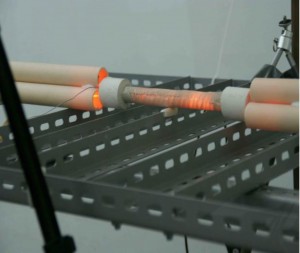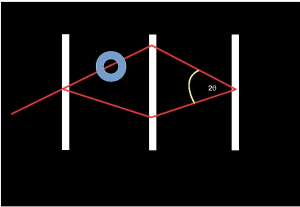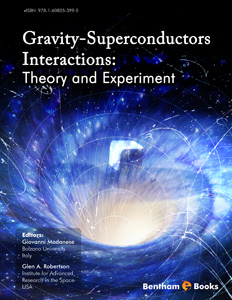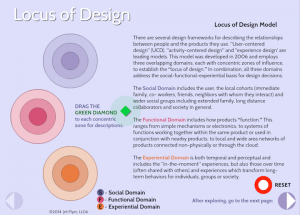-
gdaigle wrote a new post 11 years, 1 month ago
-
gdaigle wrote a new post 11 years, 2 months ago
A long-awaited extended study of the E-Cat low energy nuclear reactor by third party scientists has been published. A copy of the report is now posted at the web site Sifferkol.se.
Here is the explicit URL […]

-
gdaigle wrote a new post 11 years, 2 months ago
Nearly a decade ago when I was teaching Second Life to my students, I would occasionally come to a new “sandbox” where, upon landing, I was immediately hit with a barrage of swarming objects. They visually blocked […]
-
gdaigle wrote a new post 11 years, 4 months ago
As stated in NextBigFuture, a US scientist, Guido Fetta, has built his own propellant-less microwave thruster, and managed to persuade NASA to test it out. The test results were presented on July 30 at the 50th […]
-
gdaigle wrote a new post 11 years, 4 months ago
-
gdaigle wrote a new post 11 years, 4 months ago
Until it becomes a discipline in its own right with its own set of best practices, gravity design will likely begin as an intersection of other design disciplines. Other design disciplines may […]

-
gdaigle wrote a new post 11 years, 4 months ago
EHT gives rises to six fundamental forces, three of them of gravitational nature, and thus could lead to a novel type of propulsion without propellant. The following are quotations from a 2012 paper by Droscher and Hauser. It suggests that one of the three gravitational forces acts upon spacetime and underlies the cosmological constant responsible for the expansion of the universe. It is postulated that negative dark energy (attractive field) is attracted to the matter inside of a galaxy and that its antiparticle (repulsive field) is repelled by the interior matter and collects in the galactic halo where dark matter resides. This makes it a candidate for the explanations behind MOND, a leading alternative to dark matter that has been found to accurately predict the speed of stars within dwarf galaxies.
On the Reality of Gravity-Like Fields
AIAA 2012-2491
48th AIAA/ASME/SAE/ASEE Joint Propulsion Conference & Exhibit
29 July -1 August 2012, Atlanta, Georgia“It is assumed that the dark energy is composed of both repulsive and attractive fields and only the combined action is perceptible in empty space. Inside galaxies, because of the large density of visible matter, the attractive field is neutralized and an additional gravitational interaction mediated in form of the MOND acceleration a0 has to be taken into account.”
“Since no dark matter seems to reside within galaxies (ESO observations, June 2012), but, on the other hand the deviation from Newton’s law has been experimentally verified by McGaugh (February 2011), only the interaction of dark energy with visible matter inside the galaxy and the interaction with dark matter in the galactic halo remain to account for this modification of the gravitation law. Since the MOND hypothesis seems to give the correct value, any derivation should reproduce this value. As the measurements by Reyes and also galactic gravitational lensing have shown, both visible and dark matter are subject to Newton’s gravitational law.”
“Moreover, since strong gravitational lensing is observed, galaxies must possess dark matter. Therefore, the physical mechanism for galactic halo formation has to be found, while, at the same time, the non-existence of dark matter inside galaxies must follow from the the same physical concept, and, finally, the correct value of the MOND acceleration needs to be produced. So far, no physical theory exists. Therefore, the attempt is undertaken to apply the novel concepts of EHT to try to solve this riddle.”
“According to Loll et al. the computer simulations from Causal Dynamical Triangulation (which is a Monte Carlo simulation of the path integral for the action of GR, or summation over universes) without cosmological constant Λ > 0 do not lead to a four-dimensional spacetime in the classical limit. In other words, a repulsive gravitational force is mandatory, and thus the assumption of the existence of dark energy is justified also by computer simulation.”
“It is known that within a galaxy, cosmic expansion does not take place. Instead, an additional acceleration field, a0, directed toward the center of the galaxy is present. Since dark matter cannot be present inside a galaxy, the existence of attractive dark energy is postulated, which according to EHT, would be represented by the antiparticle of the quintessence particle νq.”
“The question arises, how the large density of ordinary matter inside a galaxy – remember that dark matter cannot be present – does act on the mixture of positive and negative dark energy that is ubiquitous in the Cosmos? The result is known, namely that inside a galaxy an acceleration a0 = 1.2 × 10−10 m/s2 pointing toward the galactic center must be obtained. Obviously, it can only be caused from the presence of negative dark energy (attractive gravitation), residing inside the galaxy, which is attracted by the visible matter inside as well as the dark matter in the halo of the galaxy. Both types of dark energy, positive (repulsive) and negative (attractive) are present throughout the Universe, but in the current era | Λ- |>| Λ+ |, and thus a resulting force leading to an expansion is acting on the space field.”
“However, as will be shown next, the effect of Λ+ (contracting spacetime, but being repulsive with regard to the matter inside the galaxy because of its negative energy) is neutralized inside a galaxy, and therefore inside the galaxy only the attractive gravitational effect of Λ- on ordinary matter (both visible and dark) remains. The reason why the Λ+ is neutralized inside a galaxy, is due to the fact that a galaxy contains a large amount of ordinary matter, where visible matter is inside the galaxy and dark matter resides in the halo, with about 80% of the matter in the halo. To understand the qualitative physical mechanism of dark matter halo formation, consider a sphere filled with positive electric charges. It will repel particles arriving from outside the sphere that are of like charge, while attracting particles of negative electric charge. In the gravitational case, the νq particles are representing the cosmological Λ+ field and are repelled by the galactic matter, and thus are screened out. The νq particles, representing the Λ- field are attracted by the galactic matter, and thus are collected mainly in the halo, where matter density is larger. Thus, a surplus of νq particles is collected in the halo and, to a lesser extent, inside the galaxy, resulting in an acceleration acting toward the center of the galaxy, which is known as the MOND acceleration, being prevalent for visible matter in the vicinity of the halo. In this way, dark energy in combination with the dark matter halo seems to be responsible for the observed MOND acceleration.”
[Formulas in the original document are not represented in this summary]
-
gdaigle posted an update in the group
 Methods – Methodological tools for designers 11 years, 5 months ago
Methods – Methodological tools for designers 11 years, 5 months agoToday most practitioners of product design view the tenets of “human-centered design” (HCD) as more expansive than just for software interactions but still possessing a task focus, which has compelled perennial design thinker Donald Norman to warn of the downsides of following that process too closely. Though he has no qualms about the focus upo…[Read more]
-
gdaigle wrote a new post 11 years, 5 months ago
-
gdaigle created the group
 Methods – Methodological tools for designers 11 years, 5 months ago
Methods – Methodological tools for designers 11 years, 5 months ago -
gdaigle wrote a new post 11 years, 5 months ago
This is a preprint of an article accepted for publication in a special issue of the Journal of Space Exploration, ©2014 Mehta Press: Terrestrial and space applications of gravity-like fields. Publication date […]
-
gdaigle posted an update in the group
 Prototyping generators 11 years, 5 months ago
Prototyping generators 11 years, 5 months agoA more robust design configuration capable of generating sufficient lifting force for a space vehicle (shown at the top of this group) would need sufficient current to produce a much stronger acceleration field. In practice a larger disk and bigger coils would also be needed to lift such a mass. As suggested in their 2010 AIP study, this…[Read more]
-
gdaigle posted an update in the group
 Prototyping generators 11 years, 5 months ago
Prototyping generators 11 years, 5 months agoIn the short version of their 2007 paper, Advanced Propulsion Systems from Artificial Gravitational Fields 89 , Dröscher and Hauser dropped their fermion coupling approach and discussed how they would reconfigure Tajmar’s apparatus to become GME2 (Gravito Magnetic Experiment #2), a “bench test” experiment employing boson coupling through a spin…[Read more]
-
gdaigle created the group
 Prototyping generators 11 years, 5 months ago
Prototyping generators 11 years, 5 months ago -
gdaigle created the group
 Intersecting fields – Shaping gravity 11 years, 5 months ago
Intersecting fields – Shaping gravity 11 years, 5 months ago -
gdaigle created the group
 Lensing fields – Optical effects 11 years, 5 months ago
Lensing fields – Optical effects 11 years, 5 months ago -
gdaigle created the group
 Membrane fields – Containment 11 years, 5 months ago
Membrane fields – Containment 11 years, 5 months ago -
gdaigle created the group
 Pull fields – Tractor beams 11 years, 5 months ago
Pull fields – Tractor beams 11 years, 5 months ago -
gdaigle created the group
 Barrier fields – Shields 11 years, 5 months ago
Barrier fields – Shields 11 years, 5 months ago -
gdaigle changed their profile picture 11 years, 5 months ago
- Load More


